RED OAK HOLLOW, Virginia — On a cold February morning in this rural unincorporated community, some 200 people gathered by an old wooden house on the grounds of a popular ATV park and hunting club. They were there to form a militia, in response to a “Call to Muster” that had been posted on Facebook a few weeks earlier.
Leading the call was Mike Dunn, a baby-faced 19-year-old dressed in military fatigues with an assault rifle slung across his chest. His respondents were overwhelmingly white, male, armed, and over 60 — some wore MAGA hats, others flew the big yellow Gadsden flag, featuring its iconic rattlesnake and the words “Don’t Tread On Me.”
“I’m not asking you to go to war with me. We will not be the first ones to move aggressively,” Dunn told the crowd. “I’m asking you to band together with me, with the citizens of your respective counties, and prepare to defend your liberties and freedoms alongside each other, whether it be verbally, legally or — god forbid — physically.”
Back then, Dunn and his group, the Virginia Knights, were rallying the troops in response to gun control bills recently introduced by newly-elected state Democrats.
Five months later, he’d traded in his military fatigues for a Hawaiian shirt. He’d found a home as a rising star in an insurgent, anti-government movement steeped in fantasies about a second civil war or uprising: the “Boogaloo Bois.”
Dunn’s metamorphosis from militiaman to Boogaloo Boi was on full display on July 4, this time at a pro-gun rally he’d organized in downtown Richmond. Richmond was basically a ghost town: Businesses were shuttered due to the COVID-19 pandemic and many storefronts were boarded up after recent civil rights protests over policing and Confederate statues.
But Dunn was there early, unmasked, wearing a flowered red shirt and jeans, with a Glock-19 holstered on his hip.
“We all wear Hawaiian shirts,” said Dunn. “We boogaloo.”
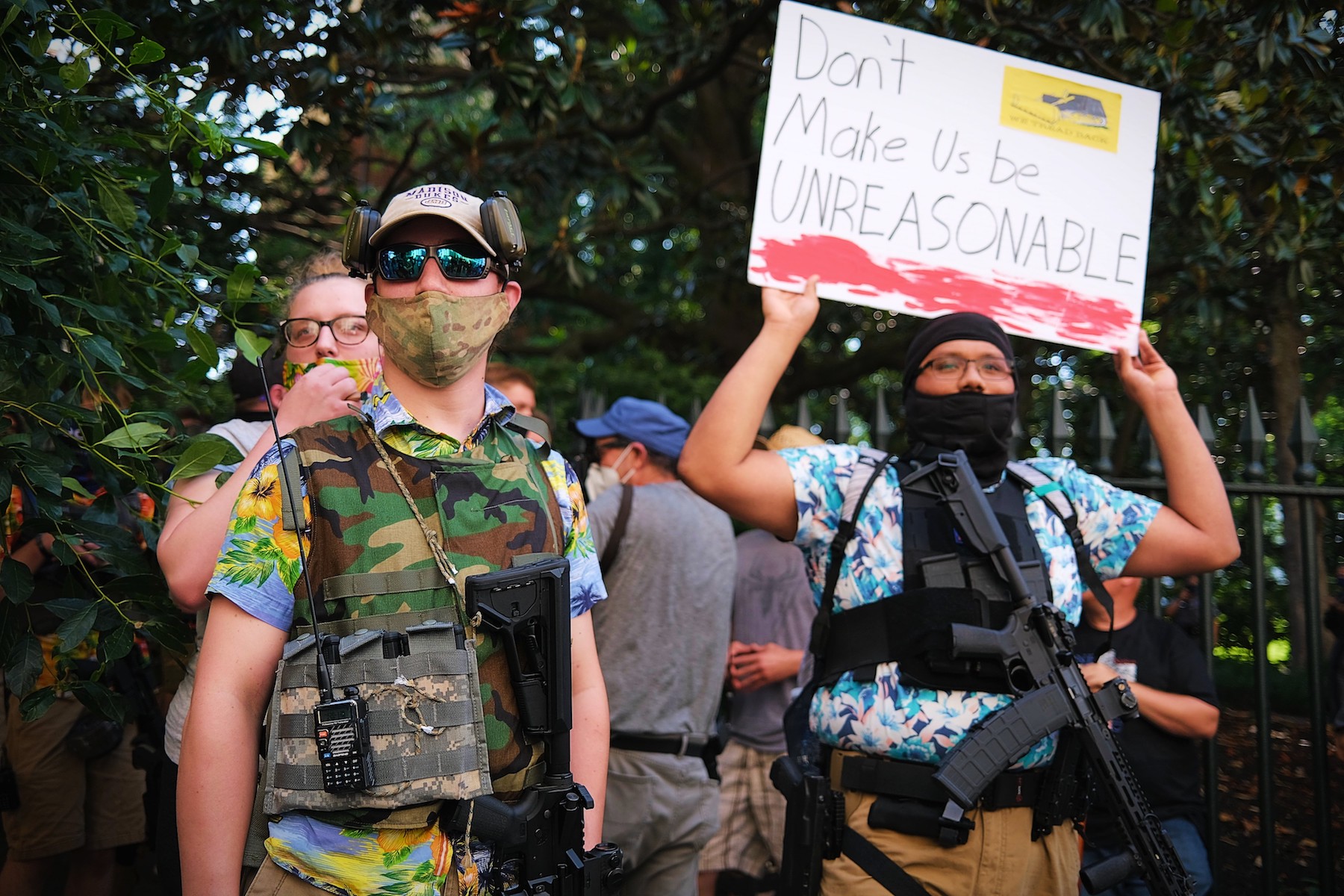
While the origins of the Boogaloo movement are complex, it’s not hard to understand why it picked up sympathizers in Virginia, where simmering tensions over gun rights made it ripe for a surge in anti-government, paramilitary activity.
“We are not only seeing our gun rights assaulted, we are seeing our religion assaulted, our way of life ridiculed, and used as talking points.”
Last November, a special election turned the Legislature blue for the first time since 1993. After winning, newly-elected Democrats got to work writing up gun control bills, which they’d promised since a mass shooting at a municipal building in Virginia Beach left 12 dead earlier that year.
The election formalized what had been happening in Virginia for years: a spiritual rift between the increasingly wealthy and liberal urban centers and the poorer, rural conservative areas. Within weeks of the election, a majority of counties in the state had declared themselves “Second Amendment Sanctuaries” to buttress against any new gun laws. Meanwhile, Dunn and dozens of others were moving to coordinate militia activity. And on January 20, a huge gun rights rally drew 22,000 people to Richmond’s annual “Lobby Day” event at the Capitol.
At the time, Virginia — a traditionally red state suddenly with a blue Legislature — seemed like an extreme case of polarization in a country already at odds with itself. But now much of the U.S. is experiencing similar regional and political tensions, amid an anti-government backlash to COVID-19 measures, historic unemployment, and a new civil rights movement.
All those factors have contributed to the swell in extremist activity.
Dunn’s radicalization tracks with the evolution of the Boogaloo movement more broadly, which went from an obscure internet meme to a national security concern in the space of just six months. Dunn is one of the tens of thousands of mostly young men who’ve flocked to sprawling Boogaloo communities online, known for ironic shitposting and civil war rhetoric.
“I just kind of woke up one day, and decided to go get the discounted shirt at Walmart. They had a sale. I couldn’t resist.”
They tend to view themselves as the younger, action-oriented generation of militiamen. But they’re hard to pin down ideologically. Their ranks include hard-line libertarians, anti-government types, some white supremacists, and many active-duty military. Experts say that diverse composition is part of what makes them dangerous, and hard to track.
And they’ve got a lot of guns.
“We are actually willing to do something,” said Dunn, describing what he sees as one of the key differences between the Boogaloo movement and traditional militia groups. “We’re 100% willing to fight. We’re putting ourselves out there, willing to defend our rights.”
Fertile ground
Dunn was raised in North Carolina, where he grew up around guns. At 17, he enlisted in the military. “I learned a lot about firearms in the Marine Corps and grew to love them even more,” he said.
One year after he joined the Marines, Dunn was honorably discharged due to a heart condition. He was disappointed, and hungry for ways to exercise some of the skills he’d gained during his brief tenure in the military. “I felt like the Marine Corps was my way to serve my country,” Dunn said. “But fate had other plans.”
Dunn moved to the city of South Boston in southwest Virginia, about 110 miles from the North Carolina border. A few months later — around the same time the Democrats won control of the Legislature — he organized his own militia, the Virginia Knights, with five people he’d met there.
“I wanted to form a group of armed citizens that wanted to defend the Constitution of the United States, while at the same time helping educate individuals on firearms and weapons rights,” said Dunn.
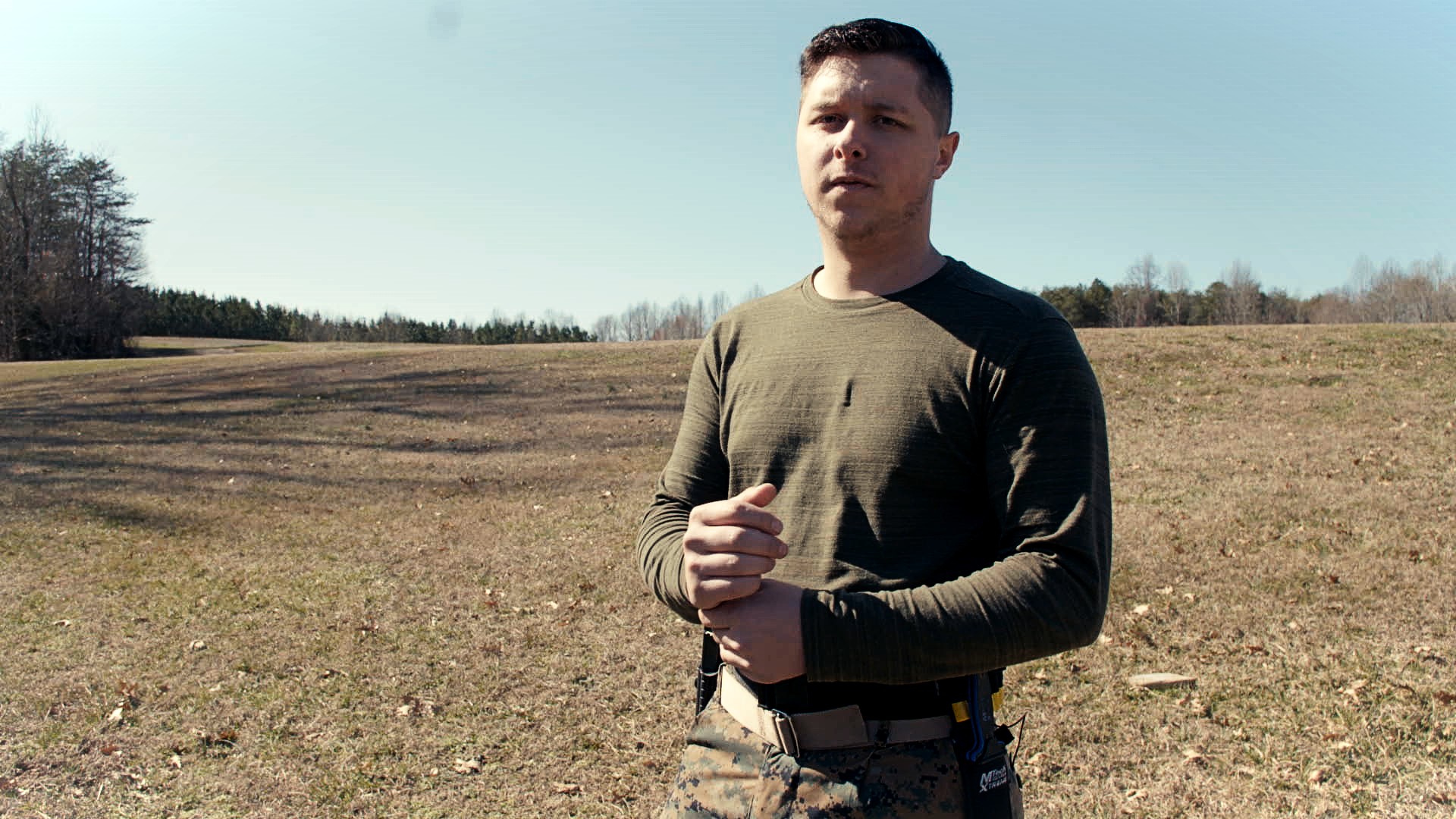
The looming threat of gun control and the massive turnout on Lobby Day helped galvanize Virginia’s brewing militia movement, which had especially taken off in the southwest of the state, a region that’s struggled to stay afloat amid the declining coal industry and waning demand for tobacco.
Between January and March, residents of at least eight counties brought “militia resolutions” to their boards of supervisors, requesting formal recognition of a militia and funding. The resolutions were similar, and generally vague about what the militias would actually do once formed. Only two actually passed.
But the proposals were a hot topic of local discussion. At one public comment session in February in Giles County, near the border with West Virginia, residents crammed into the small administrative building to hear about the militia resolution. (Typically, public comment sessions would draw just a few residents, an administrator told VICE News).
“We are not only seeing our gun rights assaulted, we are seeing our religion assaulted, our way of life ridiculed, and used as talking points,” said Matthew Bowles, 32, one of the lead proponents of the resolution.
“Elites from Northern Virginia feel that they can dictate us how to live and to think, thinking that we want in some unconscious way to be like them, and have our towns and lands resemble theirs.”
Bowles’ pitch for a militia sounded along the lines of a glorified Boy Scout group: a reliable, organized unit made up of community members, who could be called upon to help out in a pinch. “If there's one elderly person's roof that we can tarp to stop the rain from pouring in, if there’s one lost animal, or heaven forbid, a lost child, it's something that we can help the county sheriff's office with,” said Bowles.
As groups of activists in those counties sought formal approval for militias, others were taking a different approach. Residents in at least 11 Virginia counties were organizing in person, via so-called “militia musters,” to protest gun laws they deemed unfair. Dunn says his Virginia Knights group was involved in five of those musters, and he helped set up an additional 13 militias whose members wanted to remain anonymous.
In Red Oak Hollow, even then, some appeared concerned that associating with Dunn could be a liability. Chris Griffin, a farmer from Pittsylvania County, was one of the original organizers for the muster in Red Oak Hollow. Griffin and Dunn clashed in the days leading up to the muster, and Dunn ended up taking over the event. Griffin was left with a bad taste in his mouth.
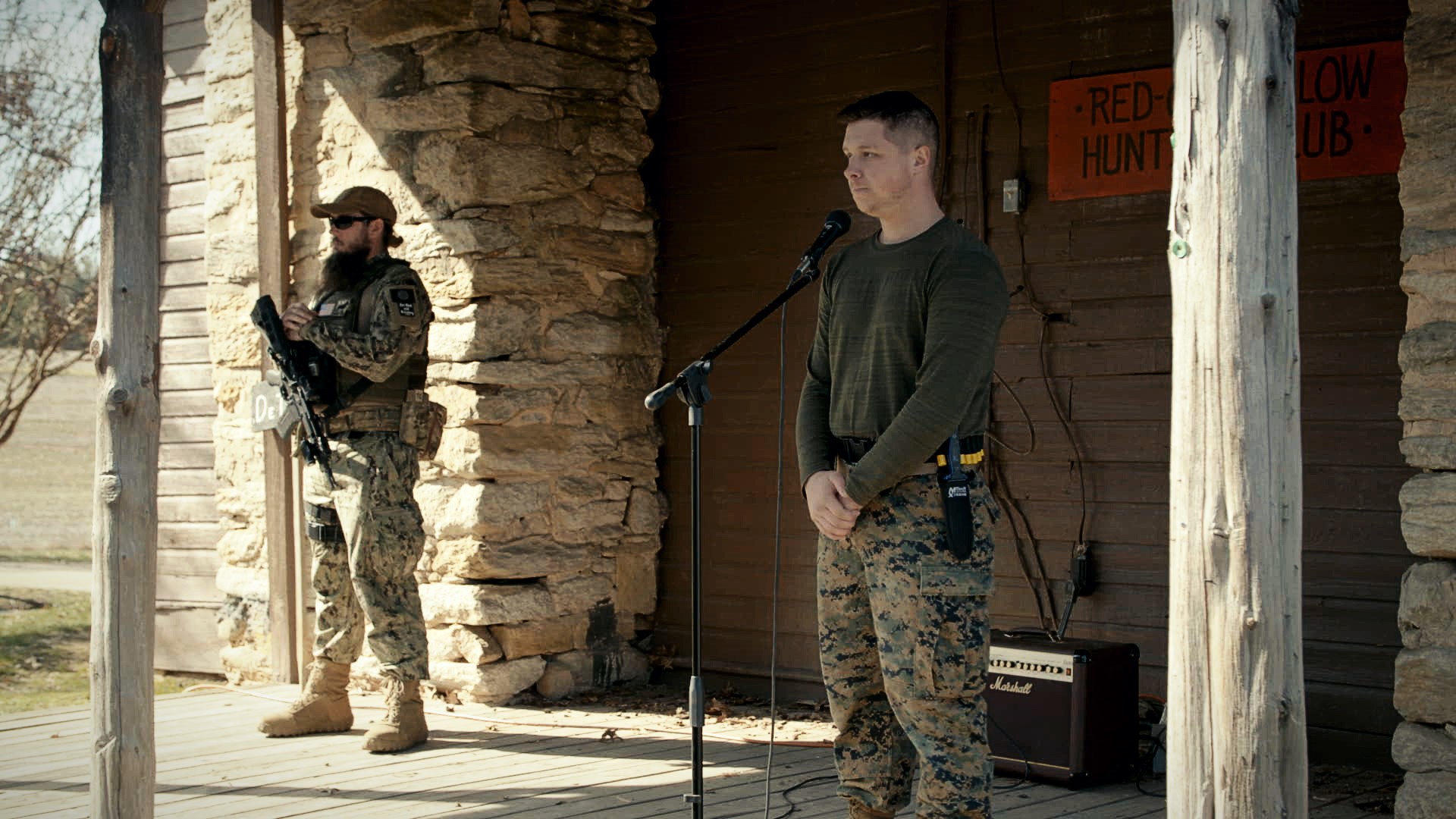
“Some of the guys are extremely excited about infringements on the Second Amendment,” Griffin told VICE News in February, on the eve of the muster. “They’re not white supremacists. They’re not anarchists. There are some who could be what I would call paramilitary — and they want to jump in with both feet without testing the water. The best thing I can do is just say, ‘Look, you need to slow down, you need to ease into this.’”
Griffin and his wife, Tina, went to the muster and were shocked when they pulled into the parking lot to see a group of heavily armed men in military fatigues directing cars where to park. “We want to not be seen as a bunch of gun nuts, but we want to be seen as people, right?” Griffin told the crowd at one point during the muster. “We have to stay peaceful.”
Dunn later described Griffin as a “Fudd” — a derogatory meme based on the Looney Tunes character Elmer Fudd to describe someone who owns guns but will ultimately comply with gun control legislation.
Birth of the Boogaloo movement
The Boogaloo meme was inspired by the 1984 movie “Breakin’ 2: Electric Boogaloo,” which was the sequel of a movie from a few years earlier, “Breakin’.” The meme began circulating online a few years ago as code for a second civil war (in other words, a sequel), or popular uprising. In 2019, it gained steam in some neo-Nazi circles and on some internet weapons forums, like 4chan’s /K board.
Then came Lobby Day, an annual occurrence in Virginia where NGOs and civilian interest groups have the opportunity to lobby their representatives at the Capitol. It wasn’t until the weeks leading up to this year’s event on January 20, which had been taken over by a gun rights group, that the term “boogaloo” started to creep into the public domain.
The political tension in the air drew widespread concern about possible violence.
There were rumblings on social media that armed militias were plotting to storm the Capitol and were preparing for an impending “boogaloo.” The FBI disrupted an alleged neo-Nazi plot to shoot into the crowd from above, to create mass chaos and spark a “boogaloo.”
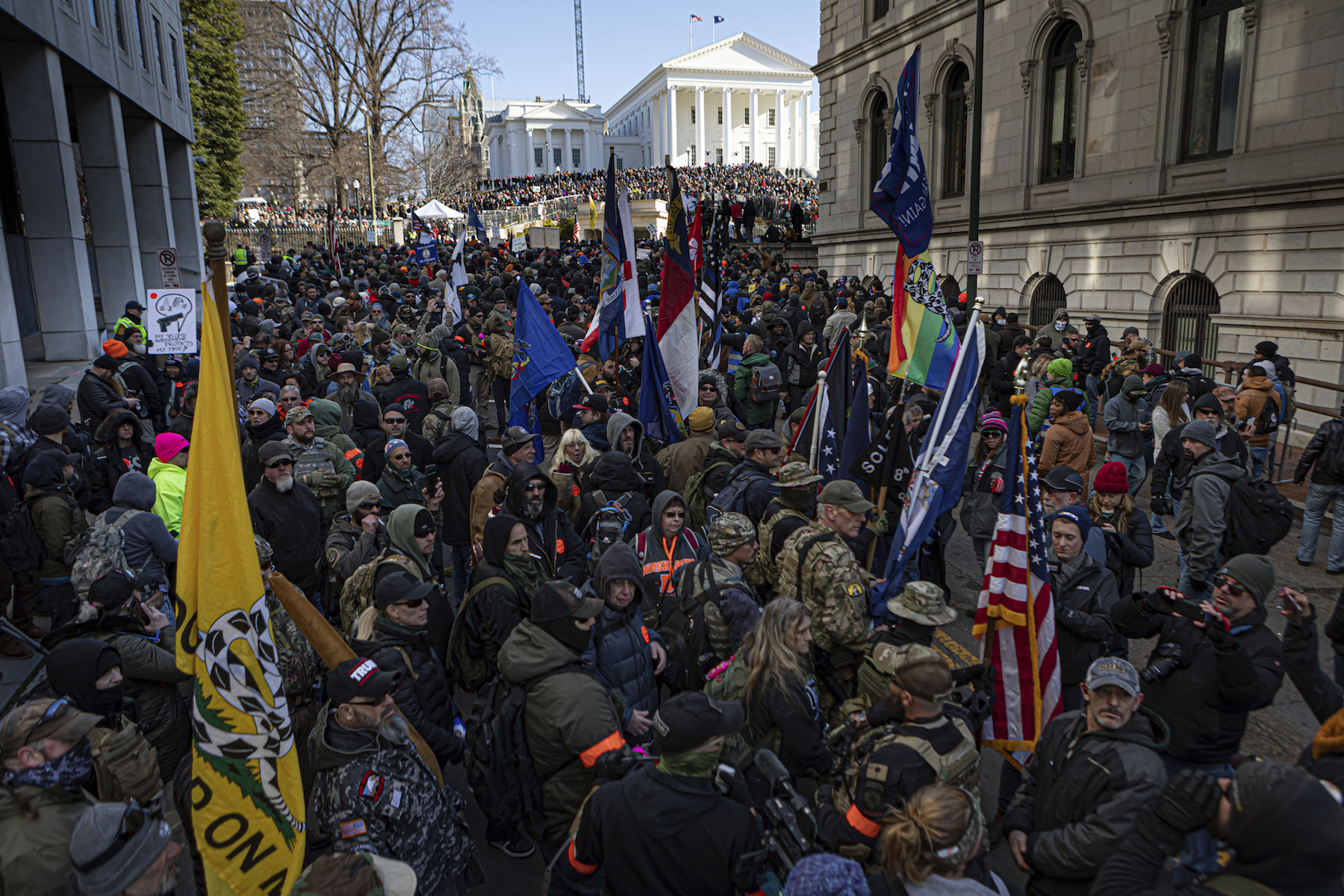
In the end, some 22,000 people flooded the Capitol grounds and the surrounding streets. The day was largely peaceful. The vast majority of attendees were Virginia gun owners, though their numbers were bolstered by heavily armed crews, many bearing the insignia of traditional militia networks like the Three Percenters and the Oath Keepers.
Dunn and his Virginia Knights were there, also heavily armed. Dunn was not yet a boogaloo — but the movement was simmering around him.
There was a different group that stood out that day: a group of young men, in their early 20s.
Two gave their names as “Squid” and “Narc.” One held up a handwritten sign that said “I dream of a Boogaloo.” Some had patches sewn onto their jackets showing a Pepe the Frog holding a semi-automatic rifle, and the words “Boogaloo Boys: Memetic Warfare.” Others had patches of an American flag, with a thin ribbon of Hawaiian-shirt print running across it, and an igloo where the stars should be.
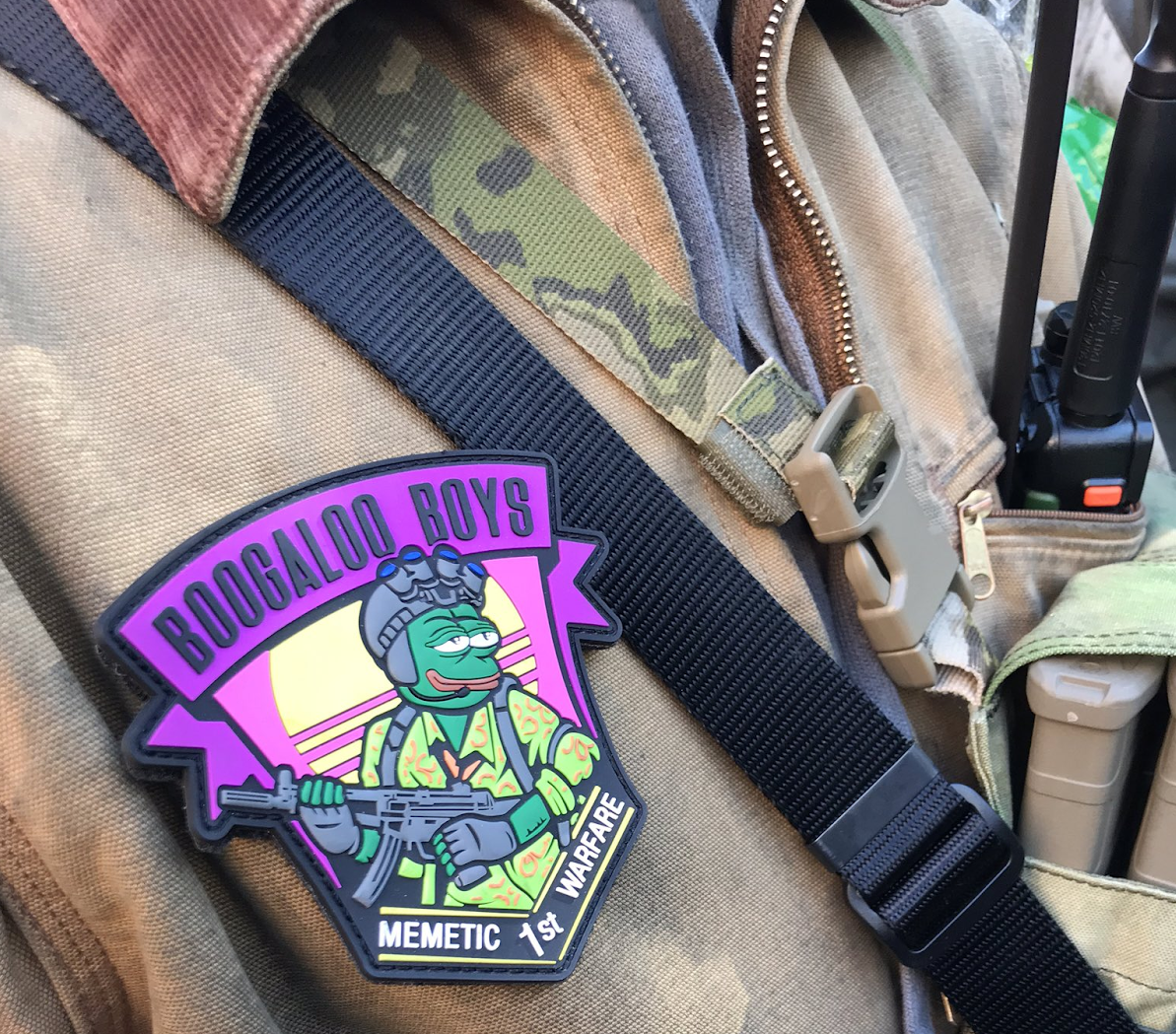
They said they belonged to a group called “Patriot Wave,” which, with around 13,000 members, was one of the largest Boogaloo communities on Facebook at that time. Unbeknownst to many extremism experts, on Lobby Day the construction of the Boogaloo online ecosphere was already well underway. Members of the community had already established a shared language of recognizable symbols and codes to help them circumvent inevitable social media crackdowns. They circulated memes glorifying violence against federal agents, like FBI, CIA, DHS, ATF — whom they referred to as “the alphabet bois.” They were creating hyper-localized Boogaloo Facebook pages to facilitate real-world meet-ups. And they were talking weaponry.
The radicalization of Mike Dunn
Dunn says he was drawn to the Boogaloo movement a few weeks after the muster in Red Oak Hollow, when a SWAT team in Potomac, Maryland, killed 21-year-old Duncan Lemp during a no-knock raid.
There are still a lot of lingering questions about what exactly happened that night and why, but police said they’d received an anonymous tip that Lemp illegally possessed firearms.
When they arrived, they said he “refused to comply” with officers’ commands, was holding a rifle, and had affixed a booby-trap device to his front door frame that was designed to fire a shotgun shell at anyone entering his residence. (A lawyer for Lemp’s family said he was in his bed sleeping when he was killed.)
Lemp, a student and software developer, was active within anti-government circles online, and known for his interest in guns and cryptocurrency. Weeks before his death, he’d posted a photo to social media of someone holding a rifle that referenced the boogaloo. Dunn and Lemp were friends on Facebook, though they’d never met in real life.
“My views have become more serious, more strong, since they murdered my buddy Duncan Lemp,” Dunn told VICE News. “I was like, you know what? I’m a Boogaloo Boi. I just kind of woke up one day, and decided to go get the discounted shirt at Walmart. They had a sale. I couldn’t resist.”
Lemp’s death was a radicalizing factor not just for Dunn but also for the Boogaloo movement overall. He became a martyr for the movement, and gave a face to its nebulous and unspecific grievances about government tyranny. Boogaloo Bois make TikToks that are just compilations of photos of Lemp, often accompanied by the words “WE WILL NOT COMPLY.” In April, a 36-year-old man was arrested for allegedly live-streaming his search for a lone police officer to “ambush and execute.” Numerous references to Lemp on the man’s social media led some to conclude that he was trying to avenge his death.
“Duncan was a great guy,” Dunn told the crowd at the July 4 rally in Richmond. “He said his biggest issue with the government was they took his mango Juul pods away.” When asked, many heavily armed young men in Hawaiian shirts at that rally gave their name as Duncan Lemp.
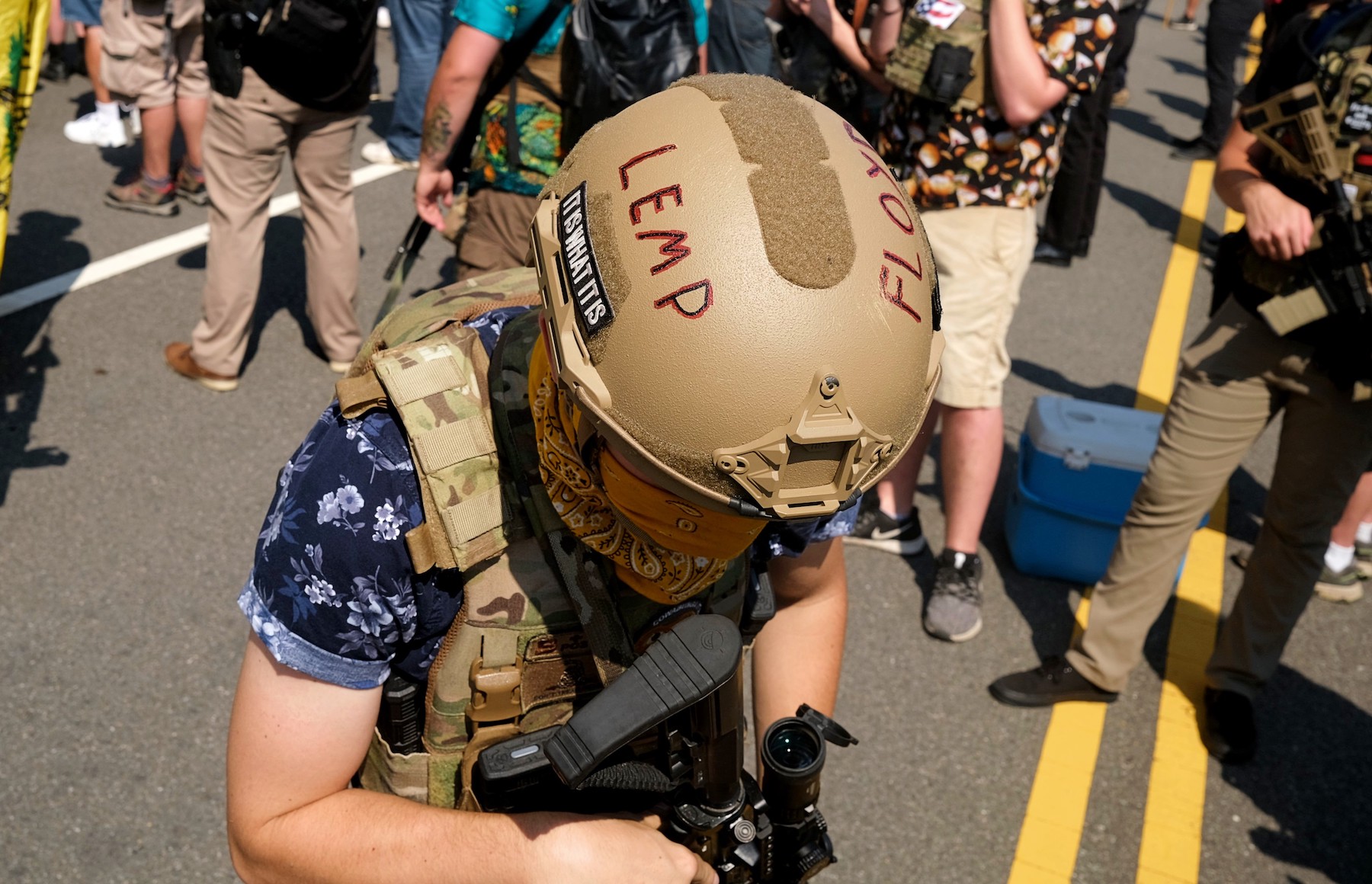
As for what Dunn’s views getting “more serious, more strong” means: He’s careful about what he says in interviews, for the most part, and at public events.
“We’ll stand by our members and our rights, and anyone’s rights as an American to own firearms,” said Dunn. “And we’re tired of being run over.”
Dunn says he’s still closely involved in the network of militias he formed through the Virginia Knights, and holds regular training sessions — sometimes multiple sessions in just one weekend. At the moment, his militias are learning “grassroots basics,” which includes firearm education, training, and learning to shoot from different positions. Soon, they’ll be moving to in-depth training, which he says includes “land navigation with compasses, overnight courses, field crossing, combat medic, and room clearing.”
Dunn says his new boogaloo identity hasn’t been an issue. Some of his trainees also identify as boogaloo, and others are “just tired of the old Three Percenter groups around here and want something new.” “All of them know I’m a boog boi,” Dunn said. “And I still work with them and help train, so they have no issue with it, I guess.”
Dunn’s tenor on social media, however, is often more ominous. He regularly posts videos of himself sitting in front of an American flag, holding guns and railing against tyranny. In one recent video, he’s showing off his new 12-gauge shotgun which he’s nicknamed “The tyrant dispenser.” In other posts, he’s talked about wanting to “have a kid before the government decides to make me expire” or urging followers to “bring justice” if he gets “suicided” or “‘red flagged’ and killed.”
The Boogaloo Bois go offline
After Lemp’s death offered a rallying cry for the boogaloos, the COVID-19 lockdowns gave them an occasion to mobilize offline. A report in April by the Tech Transparency Project described COVID-19 as a “critical moment” for the Boogaloo movement. According to their report, 60% of the 125 Facebook groups dedicated to the “boogaloo” had been created over a three-month period and pulled in tens of thousands of members as lockdown measures intensified across the U.S.
And groups of armed men in Hawaiian shirts appeared at anti-lockdown rallies in North Carolina, Michigan, and Texas.
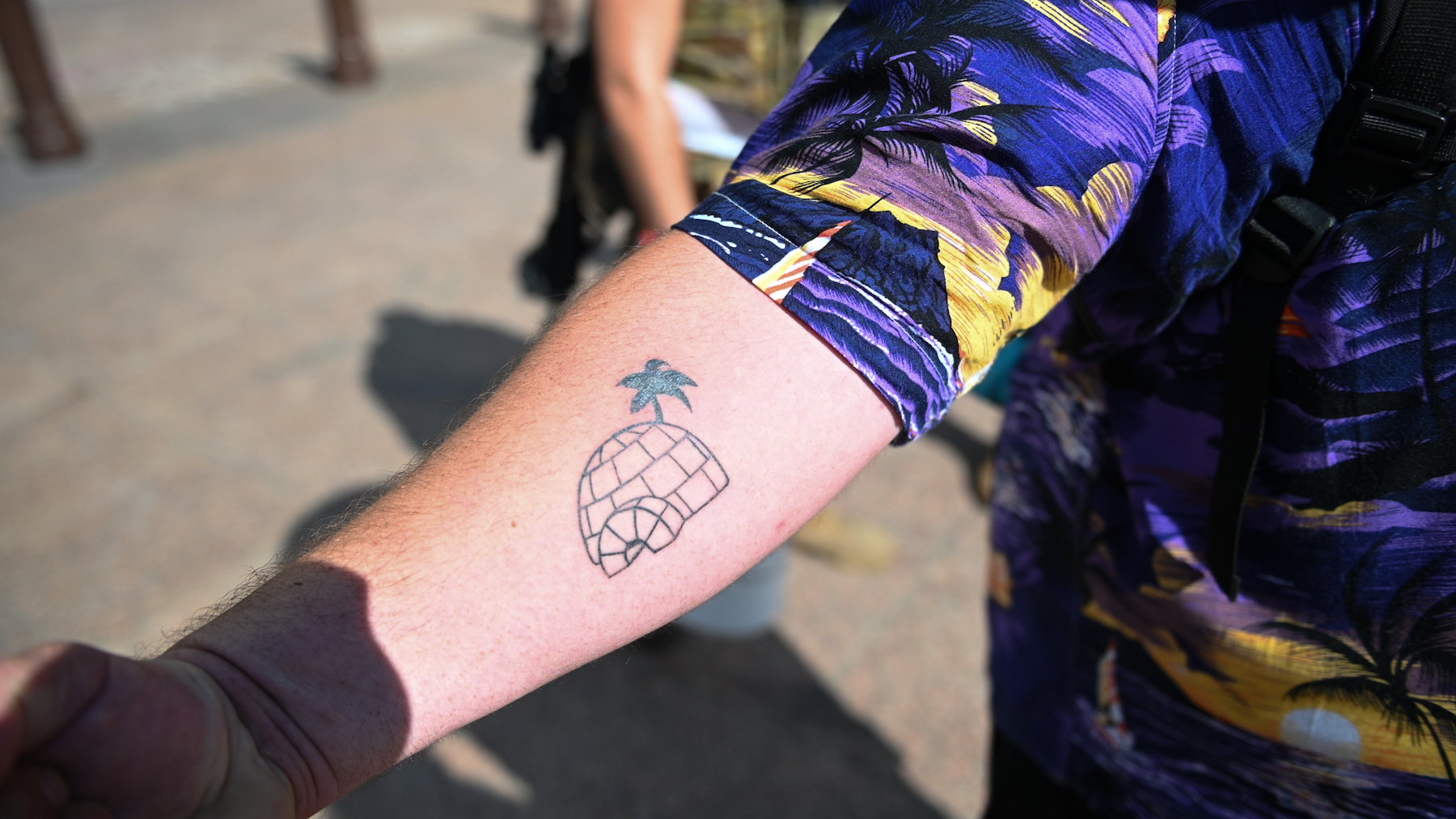
The nationwide civil rights protest movement sparked by George Floyd’s death in Minneapolis in May has given the Boogaloo movement another window of opportunity. In some cases, individuals associated with the movement have been accused of accelerating violence at protests with the goal of fomenting more unrest.
One group of men in Nevada, who allegedly met in a Boogaloo Facebook group, devised a plan that prosecutors say was modeled on tactics used by the Irish Republican Army. They’d allegedly conspired to throw explosives into the police line at a Black Lives Matter protest in May in Las Vegas, with the hope that it would provoke someone in the crowd to open fire.
And in Oakland, California, on May 29, while protesters were in a standoff with riot cops, Air Force Staff Sgt. Steve Carrillo allegedly carried out an ambush attack on federal security officers outside a courthouse, killing one and injuring another.
“Go to the riots and support our own cause,” Carrillo allegedly wrote on Facebook earlier that day. “Use their anger to fuel our fire. Think outside the box. We have mobs of angry people to use to our advantage.”
The incident was initially framed in the media and by lawmakers as evidence of escalating lawlessness at Black Lives Matter protests. A week later, investigators found a van they said belonged to Carrillo. It contained explosives, guns, ammo, and a tactical vest with a Boogaloo patch on it. The word “Boog” was scrawled in blood on the hood of the van.
Dunn rejects examples of real-world Boogaloo violence, and he, like many Boogaloo Bois, is skeptical that Carrillo was even part of the community — despite the fact that it’s a movement and an ideology, not an organization.
“Everybody knows that if Boogaloo Bois want to do something with a federal building, it wouldn't be just one of us,” Dunn said.
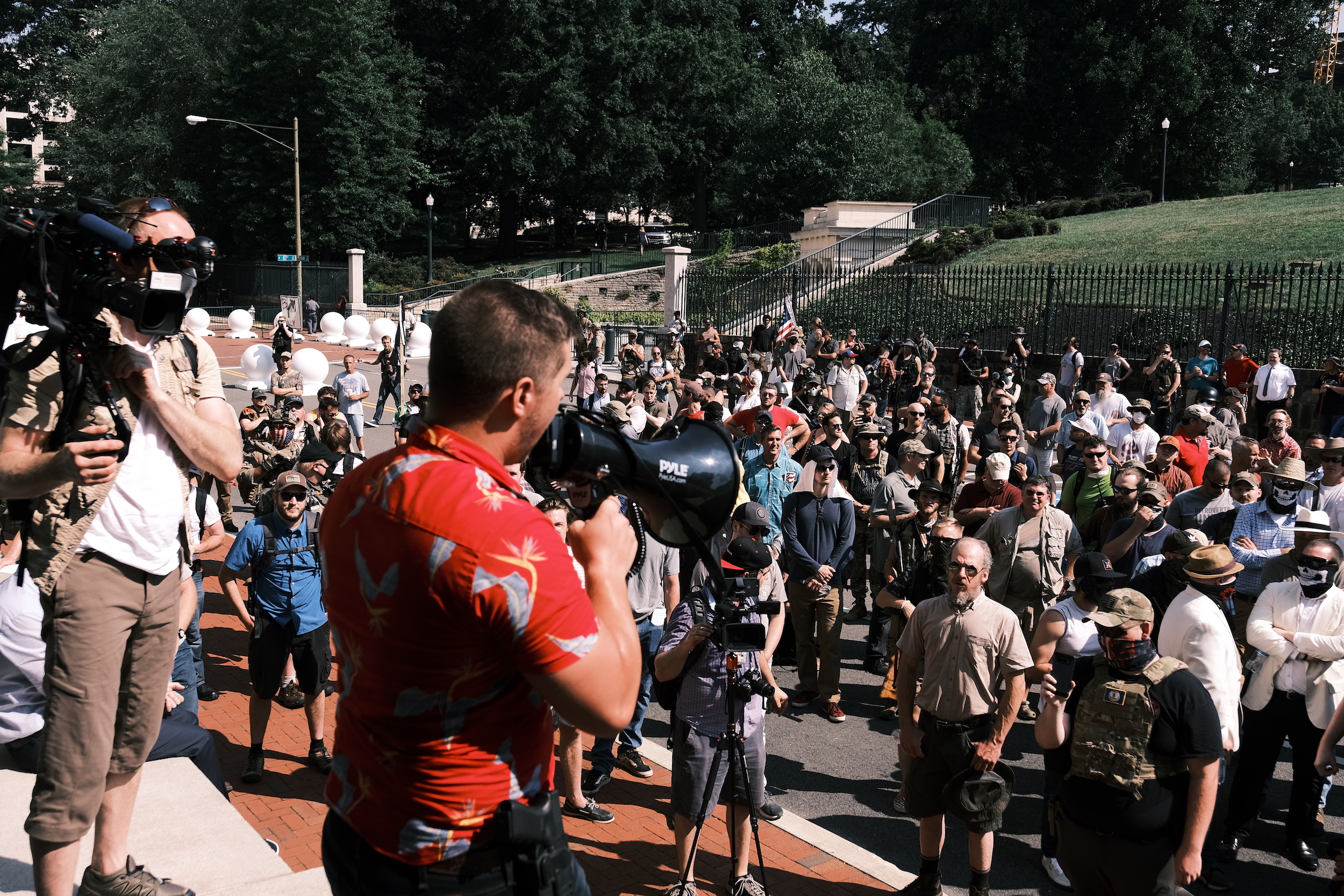
But these incidents put authorities on high alert. Attorney General Bill Barr singled out the Boogaloo movement as one of the main focuses for his task force on anti-government extremism. Earlier this month, members of Congress got an earful from experts about the national security threats posed by the Boogaloos and other insurgent extremist movements.
Social media companies have also recently taken aim at the Boogaloo movement. Earlier this month, Facebook labeled a core Boogaloo network as a “dangerous organization” and banned them from the platform. Discord, a platform popular among gamers, also nuked the boogaloos’ biggest server after it was exposed in a VICE News article. Since these crackdowns, the movement has reconvened on a little-known platform called MeWe, where they’ve adopted new terminology to evade crackdowns on mainstream platforms, such as establishing new pages that use VICE or CNN as a euphemism.
Dunn has felt the heat too. He’s been kicked off Facebook several times — and says he’s on the government’s radar. “I’m already on a watch list. I’m obviously on a watch list,” Dunn said. “I had the FBI visit my house. No further comment on that.”
Dunn said he was fired from his position as a corrections officer one week before the July 4 rally, but he wouldn’t go into detail for legal reasons.
“We’re on a national threat level right now. We’re considered a national threat, which is ridiculous,” said Dunn. “And they’re already trying to call us terrorists. That in and of itself shows how strong we are, and we’re obviously doing something right if the government hates us that bad.”
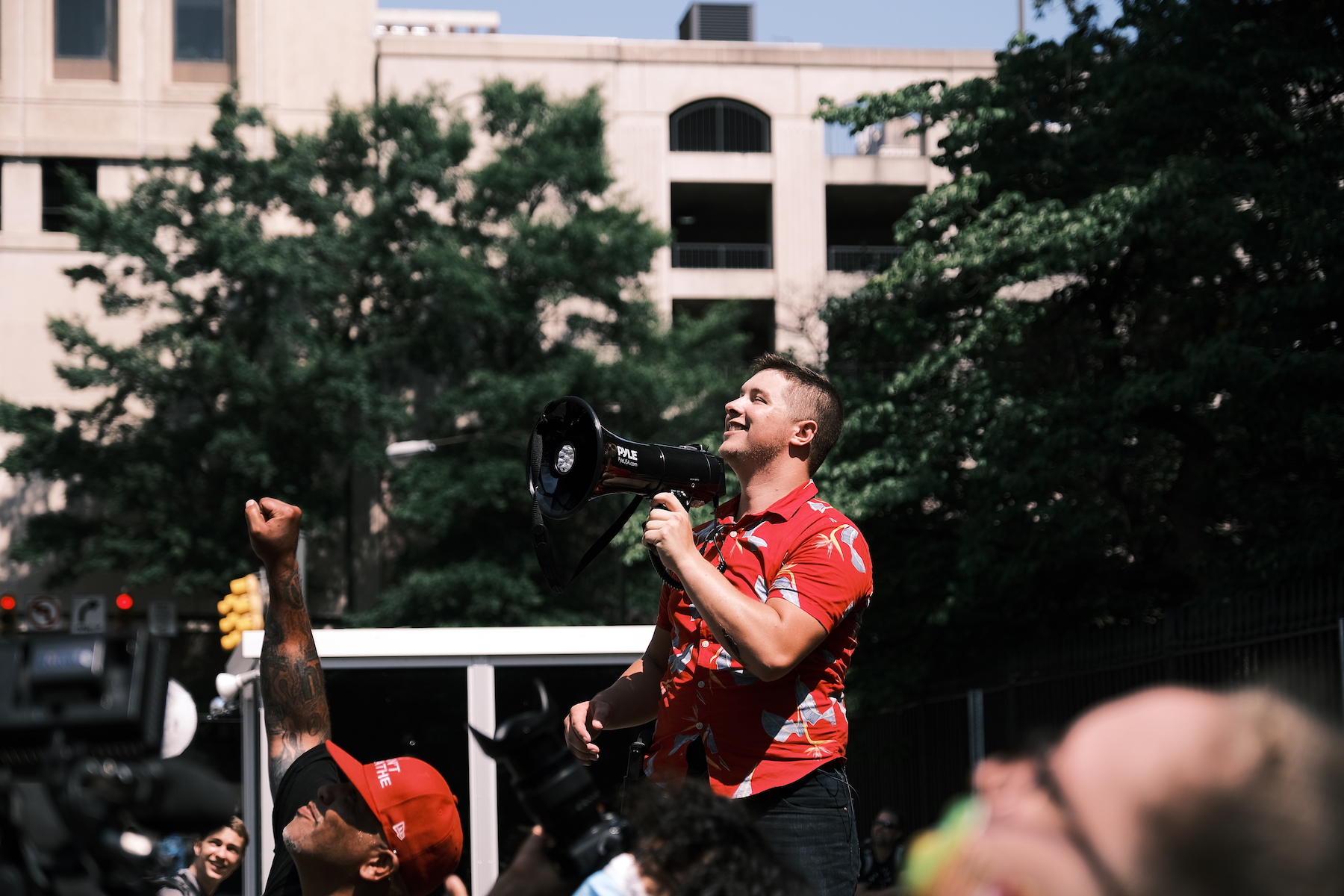
Dunn hedged on his feelings about being labelled an extremist. “I wouldn’t say I’m pleased, I would say it’s a sad day in America when someone who loves their country and loves their freedom gets labeled that,” he said. “But if being a patriot gets me labeled an extremist, I will proudly bear that term.”
A fraught relationship with race
The fact that the Boogaloo Bois are so ideologically amorphous makes them especially challenging to extremism watchdogs and content moderators.
“Ambiguity is a key feature of the problem,” the Network Contagion Institute, which maps extremist networks online, wrote in a February report about the movement. “Like a virus hiding from the immune system, the use of comical-meme language permits the network to organize violence secretly behind a mirage of inside jokes and plausible deniability.”
Some pockets of the online community intersect with neo-Nazi or white supremacist networks. In those circles, the term boogaloo is used to refer to a “race war.” But Dunn and many others in the Boogaloo movement insist that they reject white supremacy and have looked to find common ground with Black Lives Matter over their opposition to law enforcement. Some have even taken up the cause of Breonna Taylor, the 26-year-old who was killed by Louisville police when they were executing a no-knock warrant.
The presence of Boogaloo Bois at Black Lives Matter protests, though, has often been unwelcome. Carrillo and the men in Las Vegas are accused of trying to exploit the pain driving the Black Lives Matter protests to advance their own agendas. And there have been examples of organizers asking Boogaloo Bois to leave.
“I’ve witnessed incidents involving Hawaiian shirts and felt threatened.”
The boogaloos’ opposition to law enforcement is rooted not in police violence against Black and brown people but in the legacies of Waco and Ruby Ridge, where disputes over firearms led to deadly standoffs with federal agents. And while ongoing Black Lives Matter protests are calling out systemic racism as well as police abuses, Dunn and others reject the fact that police violence disproportionately impacts communities of color.
“A lot of them have come to cause mischief,” said Von Sante, 31, who attended Dunn’s July 4 rally with a few members of BLM-757, a local Black Lives Matter chapter. “I’ve witnessed incidents involving Hawaiian shirts and felt threatened.”
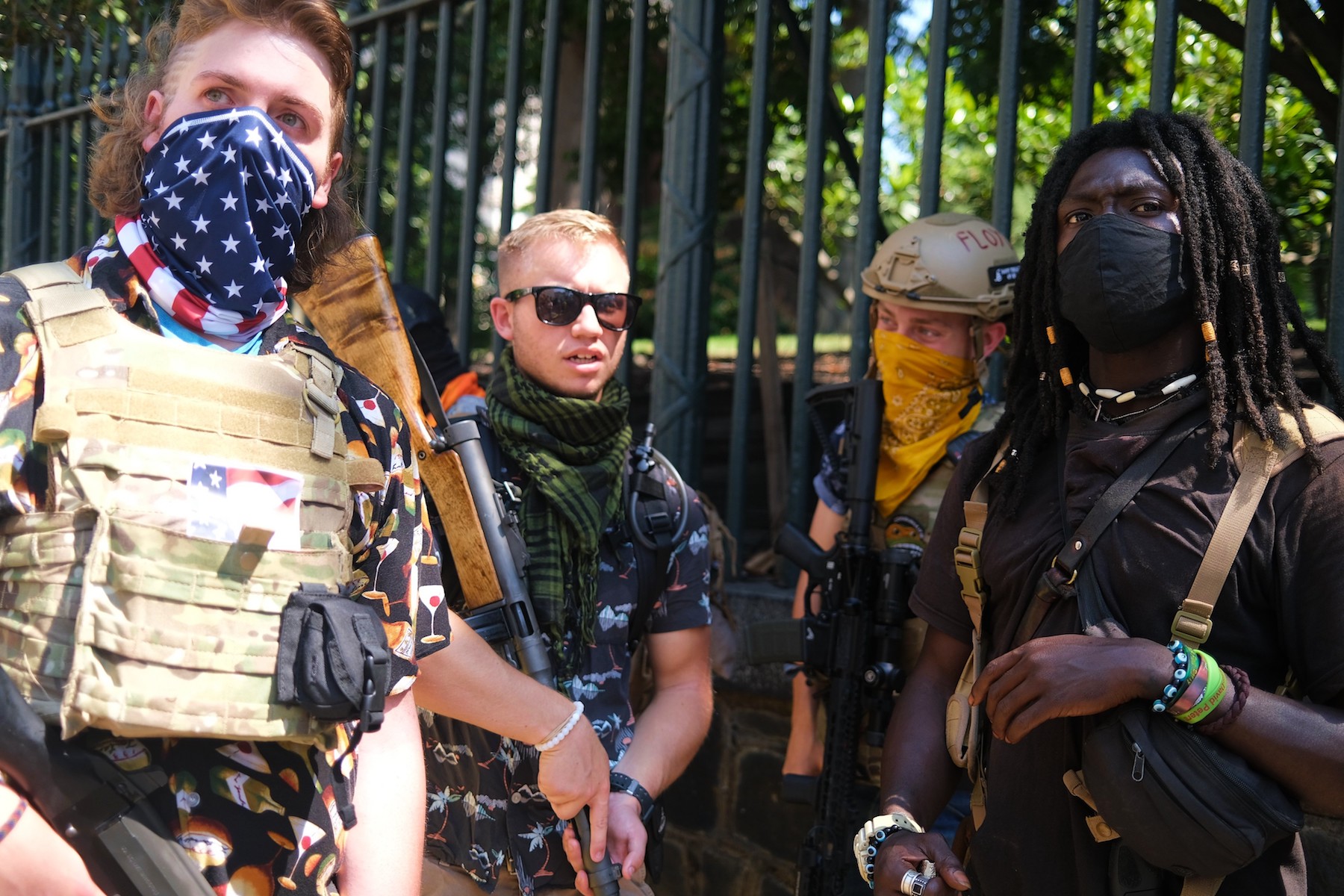
He said he felt welcome at the July 4 rally, for the most part. “I feel like there’s a few allies. Or there’s a lot who say there are,” Sante said. “Mike — he’s a good guy. He has his own battles to fight but he’s helping to protect BLM people here. He’s fighting for my rights too.”
The Boogaloo movement’s ill-defined and often hypocritical position on race and racism was spotlighted at Dunn’s rally on July 4. The event drew a bizarre cast of characters and ideologies to the area by the Capitol. Ahead of the event, Dunn joined forces with two groups that had already planned their own rallies that day: an armed group of BLM-757 and a little-known group called the Propertarian Institute.
Dunn said he didn’t know much about the Propertarian Institute, a self-described “anglo-conservative think tank” — and only learned during the July 4 rally that their ranks included “blatant racists,” as he put it.
Meanwhile, state Sen. Amanda Chase, who is running for governor, also agreed to speak at the event, despite recent criticism for spreading social media hoaxes about Black Lives Matter, including one post claiming that BLM activists would be “assassinating white families until justice is served.” She arrived a few hours after the rally had started, wearing a red mini skirt, a red T-shirt, aviator sunglasses, and an AR-15 draped around her like a necklace.
“There are some out there that want to destroy us from the inside out. They want to divide us based on race,” Chase said during a huddle with rallygoers, in which she discussed her position on Confederate monuments (she supports keeping them). “I’m not about that. I love all people. I don’t care what color your skin is. I don’t care if you’re zebra! You know, I’m a mom. Moms love people.”
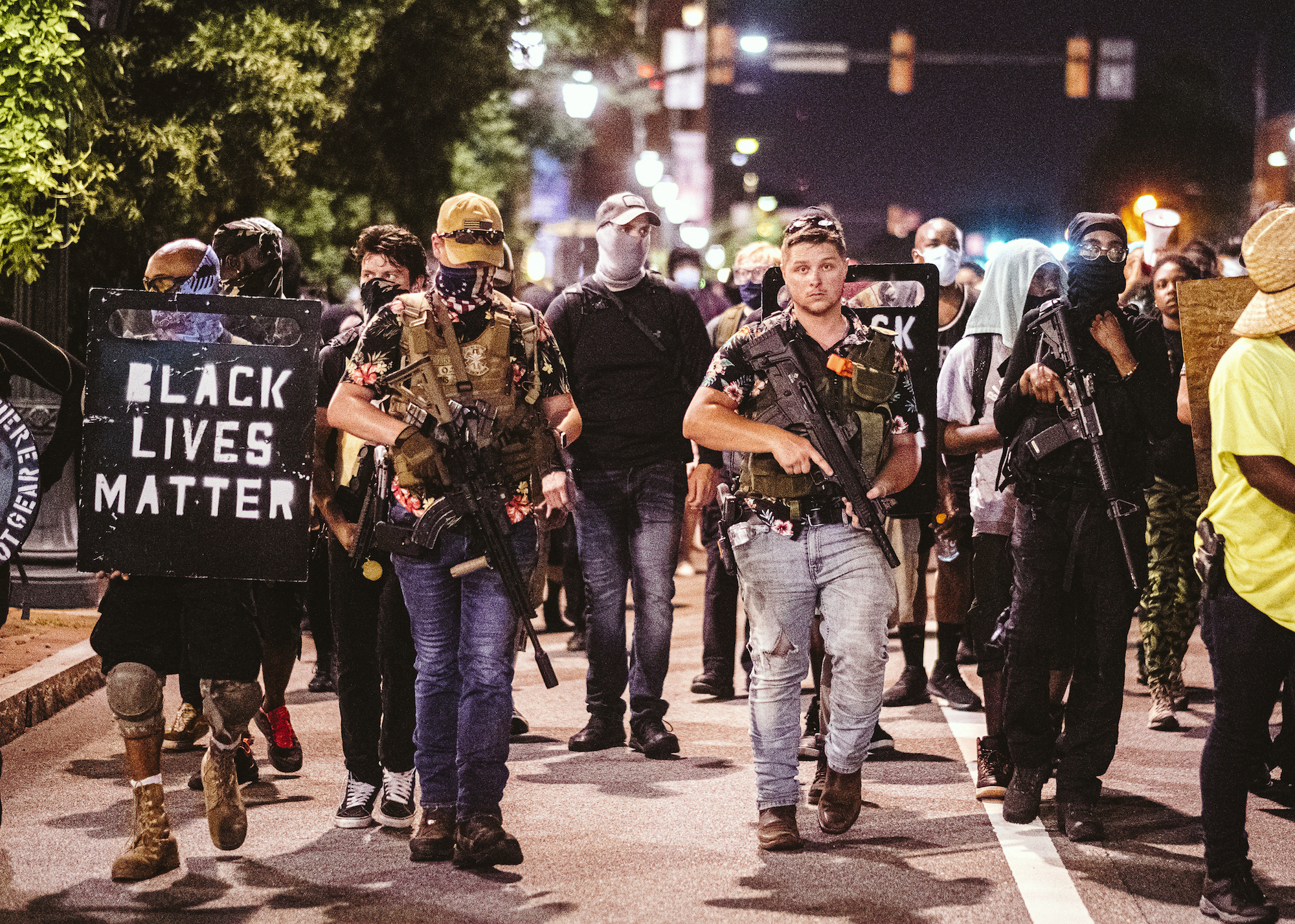
In his speech, Dunn stressed the importance of inclusivity in the fight for gun rights and invited Brendan Holmes, a Black member of BLM-757, to take the microphone.
“This man stepped out of his comfort zone to — and I will say this clearly — to come to a white Second Amendment rally, because the majority of us here are white,” Dunn said. “We’re making him feel at home because unity is what they fear most.”
“I already knew about Breonna Taylor,” said Holmes, but he had just found out about Duncan Lemp’s death. “If George Floyd had been a blond-haired, blue-eyed white guy, I still would have been pissed about what they did to that man.”
“I see a lottttta white dudes out here” at the rally, he added. “And guess what? They’re out here doing the same thing we are: peacefully protesting our Second Amendment rights.”
Members of the Rise Above Movement (RAM), a white supremacist fight gang, sensed opportunity at the event — they’d driven all the way from Kentucky to be there. One of them, Colton Williams, said he had “mixed reactions” to the speeches. “I’m an ethnonationalist and a clerical fascist,” Williams said coldly. “But it’s nice to see the solidarity, finally getting white people to stand up for themselves.”
Williams and his crew performed Nazi salutes and shouted racist slurs during the speeches. When Dunn found out about their antics, he asked them to leave and led the Boogaloo Bois in a chant of “white supremacy sucks.”
As these scenes were unfolding in downtown Richmond, Jovanni Armstead-Tucker, a Black resident of the city, was passing by. She said she couldn’t believe what she was seeing: white men parading around “dressed like they’re going to war” and a seemingly relaxed police presence. The July 4 rally came on the heels of passionate protests over Confederate statues on Monument Avenue, during which peaceful protesters were tear-gassed by police.
“Where’s the National Guard? Because that’s who they called on us when we were peacefully protesting the injustices of America,” Armstead-Tucker said. “This is the protected group right here. This is privilege at its finest. When you can spin it anywhere you want, with all the ammo and weapons, and nobody says anything and nobody cares? That’s your privilege. I can’t do that.”
Video produced by Tess Owen and Dan Ming, and shot by Michael Shade, Snorre Wik, Amanda Pisetzner, and Jessica Opon. Edited by Patrick Mannion.
Cover: Mike Dunn stands with Virginian senator Amanda Chase during an open carry protest on July 4, 2020 in Richmond, Virginia. (Photo by Eze Amos/Getty Images)
from VICE US https://ift.tt/3kik3rR
via cheap web hosting
No comments:
Post a Comment